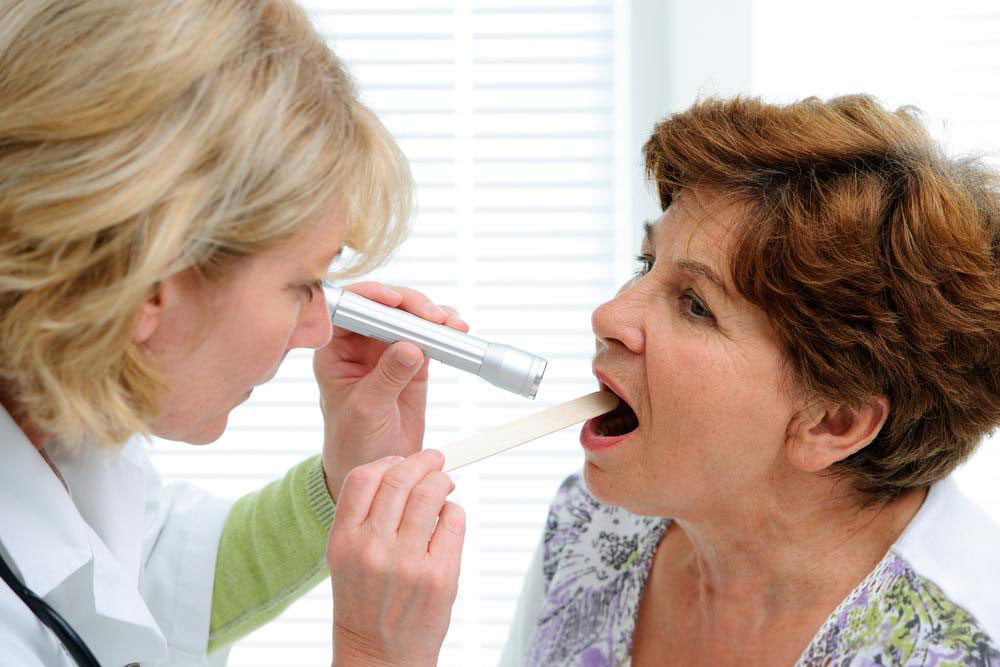Mouth Cancer – Stages And Treatment
Mouth cancer – Stages and treatment
Mouth cancer, also called oral cavity cancer or pharyngeal cancer, is a growth of cancerous cells in any part of the mouth. It can develop on the top of the tongue, on the lips, in the gums, in the interior of the cheeks, in the tonsils, in the salivary glands, on the dome as well as on the base of the mouth. Oral cancer begins in one spot of the mouth and if left untreated, it advances to other areas of the mouth, spreading to the head and neck and finally to rest of the body.

The reasons behind the occurrence of mouth cancer are not known, but the risk factors predispose the chances of its development. Its signs and symptoms are generally not visible in the early stages. Heavy smokers and drinkers, smokeless tobacco users and those with a family history should be wary and have regular appointments with their dentists. The Oral Cancer Foundation has put up mouth cancer pictures on its website for reference. Some warning signals include the following:
- Unusual patches of red or white color on the oral lining or the surface of the tongue
- Sores or ulcers that are not healing
- Lumps and swelling that remain for more than 3 weeks
- Pain during swallowing
- Aching jaw or a sore throat
The presence of any of these symptoms does not necessarily point to oral cancer but definitely warrants a visit to the doctor.
Stages of mouth cancer
The stages of the cancer are simply a way of dictating the extent to which cancer has spread, the level of treatment to be administered, and the chances of recovery. The stages are determined by tests such as the following:
- Endoscopy in which a camera is used to examine the throat to check if cancer has extended away from it
- Imaging tests which include X-rays, CT scans, PET scans are advised by the doctor depending on the extent of cancerous growth.
The four stages of mouth cancer are discussed in brief below:
- Stage I : The cancerous growth is no more than an inch across and it is present superficially. It has not reached the surrounding lymph nodes.
- Stage II : Tumor has grown considerably and measures almost 1 to 2 inches across. But it has not invaded the nearby lymph nodes.
- Stage III : Cells of cancer may or may not have penetrated the closest lymphatic nodes. The tumor has become nearly more than 2 inches in size.
- Stage IV : Either the cancer cells have infected the healthy cell of the mouth, lips and lymph nodes or it has spread to other organs of the body as well.
Treatment of the mouth cancer
Treatment of mouth cancer mainly encompasses the removal of a tumor surgically along with margins, which are a fragment of healthy tissues surrounding it. Surgery is usually followed by radiation therapy and/or chemotherapy to completely finish any remaining cancerous cells. In the stages I and II, minor surgery is carried out if a tumor is small in size. A part of jawbone or tongue may need to be removed, if a tumor has grown to a larger proportion. In the stages III and IV, when the cancerous cells have advanced to the lymph nodes and other surrounding areas, the connected tissues need to be removed in a surgical procedure. Cosmetic surgery may be needed to reconstruct the face, if treatment surgery alters the appearance of the face.
- Radiation therapy : Mutant DNA is the primary cause of cancerous growth. Radiation or high powered beams of X-rays are directed to such DNA, thus hindering their ability to reproduce. Radiation may be delivered externally (external beam radiation) or the radioactive wires may be placed into a tumor to release the radiation directly into it (brachytherapy). It is effective in the early stages of mouth cancer and the treatment usually lasts for 1 to 8 days. The therapy may have some after-effects like tooth decay, sores, bleeding gums and reactions on the skin. It is often used in conjunction with chemotherapy to avoid a relapse of cancer.
- Chemotherapy : Strong medicines or chemicals are used to destroy the DNA of the cancer cells. Drugs administered in chemotherapy may be given alone or in combination with other drugs or with other therapies. Chemotherapy is often used with radiation to increase its effectiveness. Fatigue, nausea, vomiting, hair loss, and reduced immunity are the probable side effects of chemotherapy, which go away after completion of the course.
- Targeted Drug Therapy : Monoclonal antibodies are used to change defined aspects of cancer cells to stop their growth. Cetuximab is one approved drug for targeted drug therapy for treating cancers of head and neck. These drugs are also used along with radiation and chemotherapy to treat mouth cancer. Nausea, breathlessness, and inflammation of the eyes are some adverse effects.




